Title : Eel (Anguilla marmorata), gene diversity, and new marine and freshwater bodies discoveries
Abstract:
Grass – ell (Anguilla marmorata) migrates into the mainland through the estuaries during water waves and temperature changes, and lunar season, as dark times at night as natural resources for aquaculture in fresh and marine culture. The seasonal appearance of eel is related to migrant and biological characteristics. There were groups of eels of different sizes appeared. Studies used a barcode technique to analyze molecular characteristics and build genetic plants based on the cytochrome c oxidase I (COI) gene segment isolated from the mitochondrial genome of 48 individuals. The isolated cytochrome c oxidase I sequence has a length of 843 nucleotides, four base nucleotides of 30.03% Thymine, 25.15% Cytosine, 27.49% Adenine, and 17.43% Guanine. The percentage of Guanine + Cytosine content (42.58%) is acceptable, lower than the Adenine + Thymine content. The replacement capacity of Adenine and Guanine is 22.45% highest, and the ratio between Thymine and Guanine, Cytosine, and Guanine is the lowest at 2.72%. Random amplification of polymorphic DNA (RAPD) molecular marker was used to evaluate the genetic diversity of 48 eel samples. There were 8 random primers via PCR, 77 DNA tapes with 76 polymorphic tapes were obtained, size ranged from 170-2,500 bp, in which primer S10 showed the highest diversity with an average value of 0.563, followed by primer S8 (Ho = 0.558). There were a high diversity of genes in the OPD5 primer (Ho = 0.300). The OPG17 primer is the primer that produces the most polymorphic tapes (13/13 tapes) and the S3 primer for the least amplified tapes polymorphism (9/10 DNA tapes). The diversity coefficient in each random primer ranged from about 0.300 to 0.563, with an average of 0.433. Genetic similarity coefficients among the eels varied from 0.660 to 0.910. This is the first time both cytochrome c oxidase subunit I (COI) and 16S ribosomal RNA (rRNA) genes were used to identify Anguilla eels in water bodies. Phylogenetic trees were generated from mtDNA data from GenBank for these eels.
There was that 350 individuals of sizes from 120 to 1137 mm were analyzed on characteristic morphology: juvenile, fingerling, pre-adulthood, and adulthood. Cluster 1 corresponds to the morphological characteristics at the fingerling stage (TL = 260–552.0 mm); cluster 3 is the pre-adult stage (TL = 324.6–533.9); cluster 4 is the juvenile stage (TL = 120.0–255.0), and clusters 2 and 5 for pre-adult and adult at reproductive migration (TL > 400. There were indicated typical characteristics. The animal-eating species ranges from 0.34 to 0.41 (RLG <1). Crustacea is the preferred food of eels in different proportions of the number, weight, and frequency of crustaceans, with 65%, 64%, and 80%, respectively, and showed an index of relative importance (IRI%)=79%. There was a correlation between length and the fish’s weight, with a correlation coefficient of R2=0.93. The content of lipids in skin and tissue was also examined and showed that eel flesh has relatively high nutritional values and different nutrients. There was a reasonable correlation with the weight according to the equation: Y = a × ln (W) + b, r > 0.9. The lipid content of fish skin is higher than that of muscle and meat.



